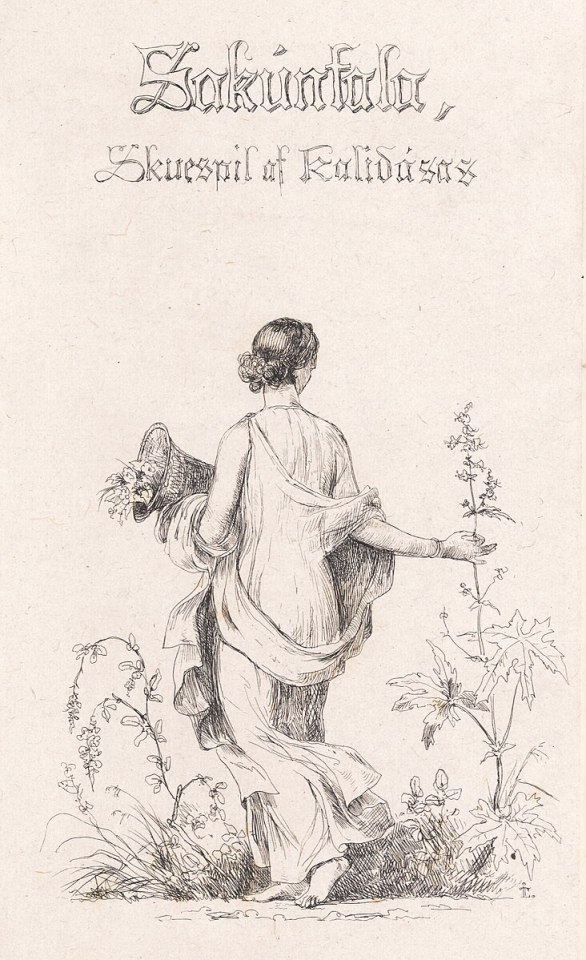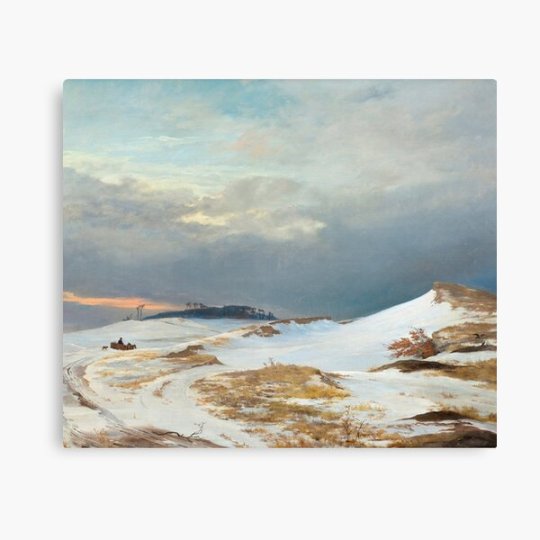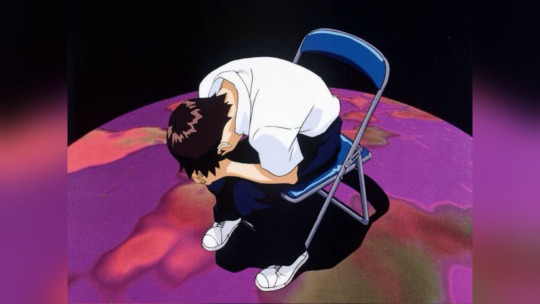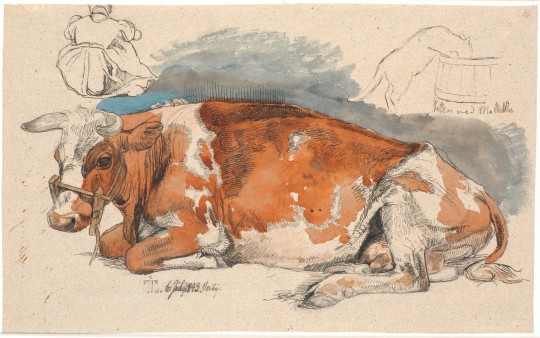#johan lundbye
Photo

Winter scenery - Swedish sledges on their way back after having sold goods in Copenhagen. The slope at Skovshoved by Johan Lundbye
Canvas Print by AR-shop
0 notes
Text

Andreas Flinch, Johan Thomas Lundbye (after), Hoppen og føllet, 1841, Statens Museum for Kunst, open.smk.dk, public domain.
(Picture source for Hoppen og føllet)
#Andreas Flinch#Johan Thomas Lundbye#art#horses#art history#horse#horse art#drawings#drawing#horseart#illustration#1800's art#19th century art#old illustration#smk
1K notes
·
View notes
Text

Johan Thomas Lundbye - From the Garden of Valhøj (1847)
98 notes
·
View notes
Photo

Kalundborg Kirke = Kalundborg Church
Johan Thomas Lundbye (Danish; 1818–1848)
1837
Oil on canvas
SMK – The National Gallery of Denmark, Copenhagen
#Johan Thomas Lundbye#Lundbye#Danish Golden Age#Danish art#Danish artists#Danish paintings#Danish painters#1830s#19th century#19th-century Danish art#19th-century Danish artists#19th-century art#19th-century artists#church#churches#Danish church#Danish churches#Kalundborg Kirke#Kalundborg Church#Church of Our Lady#towers#Zealand#brick#red brick#Danish architecture#Danish buildings#church architecture
35 notes
·
View notes
Text

Johan Thomas Lundbye, Rød ko, som slikker sit højre baglår, 1848, Statens Museum for Kunst, open.smk.dk, public domain.
I love that this painting has such strong Mamma Mu vibes.
(Picture source for Rød ko, som slikker sit højre baglår)
#johan thomas lundbye#smk#national gallery of denmark#art#artist#art history#cow#cows#cow art#1800s art#1840s art#19th century art#cows in art history
4 notes
·
View notes
Photo

Johan Thomas Lundbye, The Painter Thorald Læssøe, 1837
1 note
·
View note
Text

Flower Collector, 1844
By Johan Thomas Lundbye
#art#drawing#fine art#classical art#danish art#danish painter#19th century art#etching#graphic art#danish artist#european art#illustration
29 notes
·
View notes
Photo

Johan Thomas Lundbye, “Lorenz Frolich Sitting in a Passage Grave” (1840), pen and gray ink, brush and watercolor.
Credit...SMK, The National Gallery of Denmark, Copenhagen
86 notes
·
View notes
Text

Johan Thomas Lundbye
An Evening Beside Lake Arresø
circa 1837
4 notes
·
View notes
Photo

Winter scenery - Winter landscape with Northern Zealand character by Johan Lundbye
Canvas Print by AR-shop
0 notes
Text

Johan Thomas Lundbye, Hoved og hals af Vetturinhest, 1845, Statens Museum for Kunst, open.smk.dk, public domain.
(Picture source for Hoved og hals af Vetturinhest)
#johan thomas lundbye#art#horses#art history#horse#horse art#drawings#1800s art#19th century art#smk#Danish art#danish artist#drawings/studies
180 notes
·
View notes
Text


Past, Present, and Future: Young Man Sitting Under A Tree With His Hands In Front of His Face, Johan Thomas Lundbye (1844) // Neon Genesis Evangelion (1995-1996)
8 notes
·
View notes
Photo

Past, Present, Future: Young Man Sitting under a Tree on a Rock with His Hands in Front of His Face
Johan Thomas Lundbye (Danish; 1818–1848)
1844
Pen and black ink, brush and black and gray washes, brush and watercolor SMK – The National Gallery of Denmark, Copenhagen
The Latin words “Perfectum—Præsens—Futurum” (past, present, and future) are inscribed on the sheet at lower right.
#Johan Thomas Lundbye#Lundbye#Danish Golden Age#drawings#Danish art#Danish artists#Danish draftsmen#Danish drawings#1840s#beech tree#beech#beeches#trees#despair#branch#branches#19th century#19th-century Danish art#19th-century art#19th-century artists#19th-century Danish artists
22 notes
·
View notes
Text

Johan Thomas Lundbye, Liggende ko. Foroven til venstre en siddende bondepige, t.h. en kat drikkende af en mælkebøtte, 1843, Statens Museum for Kunst, open.smk.dk, public domain.
(Picture source for Liggende ko. Foroven til venstre en siddende bondepige, t.h. en kat drikkende af en mælkebøtte)
#art history#cow#cows#1800s art#19th century art#1840s art#cow art#smk#artwork#art#johan Thomas Lundbye#national gallery of Denmark#cows in art history
2 notes
·
View notes
Text

THE “FONTANA OSCURA” IN VILLA BORGHESE
Thorald Læssoe 1816-1878, Copenhagen
Oil on paper applied on canvas
20 x 27 cm
Signed lower right: Thorald LÆSSØE
After a brief apprenticeship with Danish “animalier” painter Christian Frederick Carl Holm, Thorald Læssøe occasionally followed courses at the Copenhagen Academy of Fine Arts, to then decide to dedicate himself to painting as a self-trained artist, along with his friends Johan Thomas Lundbye, Jens Adolph Jerichau, and Lorenz Frølich. Between 1845 and 1857 the artist lived in Rome, in a studio at the 33 Margutta Street. He will come back to Rome only in 1866, three years after his wife’s death, to remain until 1868. There is no doubt that the Roman stays had a significant impact on Læssøe’s art: indeed his paintings make an impression thanks to the strong hues and the artist’s ability to convey the Mediterranean light’s atmospheric iridescence, characteristic common to the majority of painters belonging to the Danish painting “Golden Age” of which Læssøe has been a pivotal figure. The work here presented shows the “Fontana Ovale”, one of the two fountains known as “Fontane Oscure” and located in a perspective position with respect to Museo Borghese boulevard sides. It is thought that the name “Fontane Oscure” is due to the trees’ shadow that immersed the fountain creating, during certain time of the day, surreal and magical atmospheres. They belong to the garden’s seventeenth century planning and are one of the villa’s most ancient fountains. The November-December 1977 exhibition at Palazzo Braschi in Rome, dedicated to Danish painters of the nineteenth century, saw exhibited four of his paintings entitled respectively, Le Terme di Caracalla, Veduta di Ariccia, La grotta di Egeria and Una pergola, and coming from the Museum of Fine Art Copenhagen the first two, the Soro Museum of Art the third work, and the last one comes from a Danish private collection.
2 notes
·
View notes
